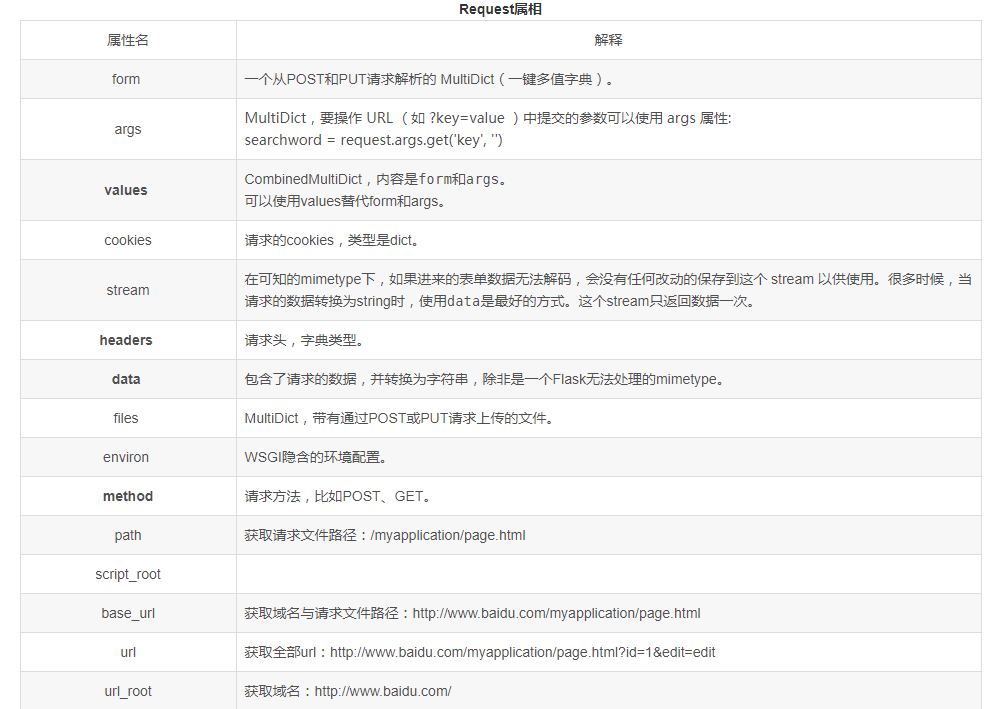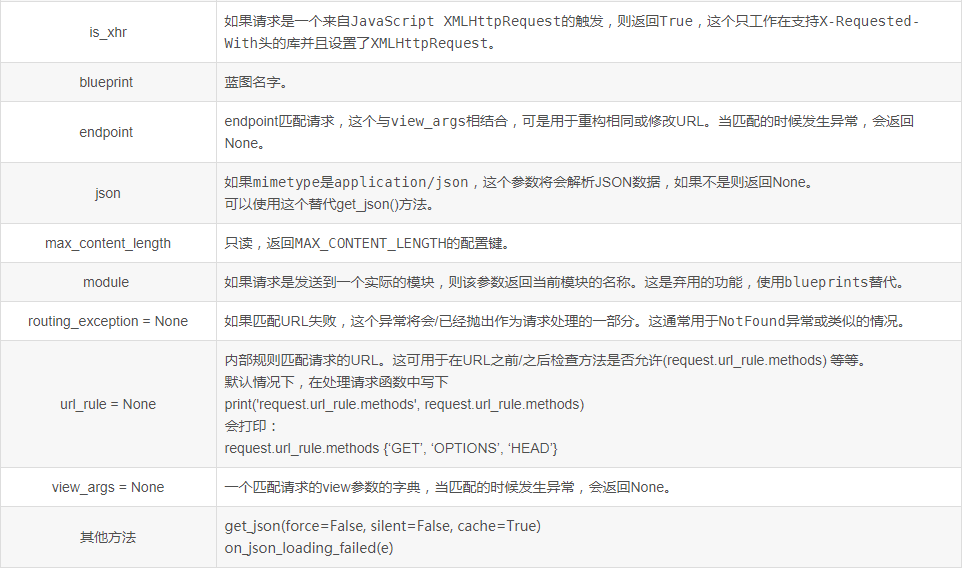Flask request 属性详解
一、关于request
在Flask的官方文档中是这样介绍request的:对于 Web 应用,与客户端发送给服务器的数据交互至关重要。在 Flask 中由全局的 request 对象来提供这些信息。
从Flask模块导入request:from flask import request
request的属性:下面是request可使用的属性,其中黑体是比较常用的。

二、常用方法的使用
#代码示例,仅仅是为了测试request的属性值 @app.route('/login', methods = ['GET','POST']) def login(): if request.method == 'POST': if request.form['username'] == request.form['password']: return 'TRUE' else: #当form中的两个字段内容不一致时,返回我们所需要的测试信息 return str(request.headers) #需要替换的部分 else: return render_template('login.html')
1、method:请求的方法
return request.method #POST
2、form:返回form的内容
return json.dumps(request.form) #{"username": "123", "password": "1234"}
3、args和values:args返回请求中的参数,values返回请求中的参数和form
return json.dumps(request.args) #url:http://192.168.1.183:5000/login?a=1&b=2、返回值:{"a": "1", "b": "2"} print(request.args['a']) #输出:1 return str(request.values) #CombinedMultiDict([ImmutableMultiDict([('a', '1'), ('b', '2')]), ImmutableMultiDict([('username', '123'), ('password', '1234')])])
4、cookies:cookies信息
return str(request.headers) #headers信息 request.headers.get('User-Agent') #获取User-Agent信息
6、url、path、script_root、base_url、url_root:看结果比较直观
return 'url: %s , script_root: %s , path: %s , base_url: %s , url_root : %s' % (request.url,request.script_root, request.path,request.base_url,request.url_root) ''' url: http://192.168.1.183:5000/testrequest?a&b , script_root: , path: /testrequest , base_url: http://192.168.1.183:5000/testrequest , url_root : http://192.168.1.183:5000/ '''
7、date、files:date是请求的数据,files随请求上传的文件
@app.route('/upload',methods=['GET','POST']) def upload(): if request.method == 'POST': f = request.files['file'] filename = secure_filename(f.filename) #f.save(os.path.join('app/static',filename)) f.save('app/static/'+str(filename)) return 'ok' else: return render_template('upload.html') #html <!DOCTYPE html> <html> <body> <form action="upload" method="post" enctype="multipart/form-data"> <input type="file" name="file" /><br /> <input type="submit" value="Upload" /> </form> </body> </html>